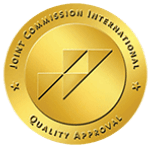When you start addiction recovery, one of your biggest fears is a relapse. The same is also true if you suffer mental illness and start feeling stable after therapy. You do not want to let go of the life balance you worked so hard to achieve. For this reason, many people develop a Wellness Recovery Action Plan (WRAP).
A Wellness Recovery Action Plan created in addiction therapy services in Tacoma gives you another tool of relapse prevention and overall wellness. But what is this plan, and how do you create one?
What is a Wellness Recovery Action Plan?
You develop a Wellness Recovery Action Plan in rehab or at your health and wellness center to help you lead a healthier, happier life. These plans address many types of physical, behavioral, as well as mental health problems. Research has proven WRAP benefits. That is why the method is included in the National Registry of Evidence-Based Programs and Practices. WRAP plans help you achieve specific goals. For example, these goals may include:
- Finding wellness tools that work for you
- Developing a list of daily wellness methods
- Identifying things that threaten your wellness
- Creating action plans for quick response to wellness threats
- Developing crisis and post-crisis plans
Anyone can use WRAP. These methods help you live your ideal life, be the person you want, and also do the things you want to do.
How Does WRAP Work?
WRAP includes several facets. Some of these are signs you must identify, and others are resources for when problems arise. Each WRAP consists of a wellness toolbox, daily plan, listed stressors, early warning signs, breakdown signs, crisis plan, and also post-crisis plan.
Wellness Toolbox
Your wellness toolbox is a resource list. Most people include friends, supporters, counselors, relaxation methods, exercises for focus, stress reduction tips, fun activities, diet, and sleep.
Daily Plan
Your daily plan lists things you need to do on a daily basis to stay well.
Stressors
Your stressors are things that cause you discomfort, including events or circumstances, all listed to remind you of your triggers.
Early Warning Signs
Early warning signs are internal cues that help you see your wellness is slipping. By recognizing these, you can take action to prevent things from getting worse.
Breakdown Signs
Breakdown signs show you that you are suffering from your behavioral or mental health problems. They also help you see you need help to avoid losing control over your wellness.
Crisis Plan
A crisis plan helps others know they need to help you in your decision making and care. This plan tells your loved ones who should help you, how you want them to do so, and things that hurt instead of helping. Overall, a crisis plan helps you have some control even when you must give more control to others.
Post-Crisis Plan
Your post-crisis plan serves as your personal map to complete wellness. It reminds you of things you need to do after you start feeling better and emerge from your crisis.
Where Do You Learn to Create a WRAP?
You learn to create your WRAP in a licensed rehab facility offering this treatment and recovery method. Of course, a WRAP does not provide a substitute for actual rehab treatment. You still need an array of programs and therapies, such as:
- Rehab programs
- Extended care
- Dual diagnosis treatment
- Individual, group and family therapy
- Health and wellness center
In the Pacific Northwest, Bayview Recovery provides the complete treatment you need, including your own WRAP development. Call Bayview Recovery now at 855.478.3650 to learn more about your Wellness Recovery Action Plan and where complete wellness begins.

 Dr. Dave Cundiff, MD, MPH (Medical Reviewer)
Dr. Dave Cundiff, MD, MPH (Medical Reviewer)






